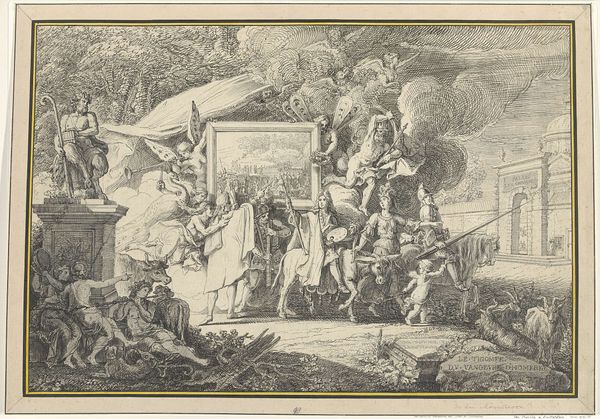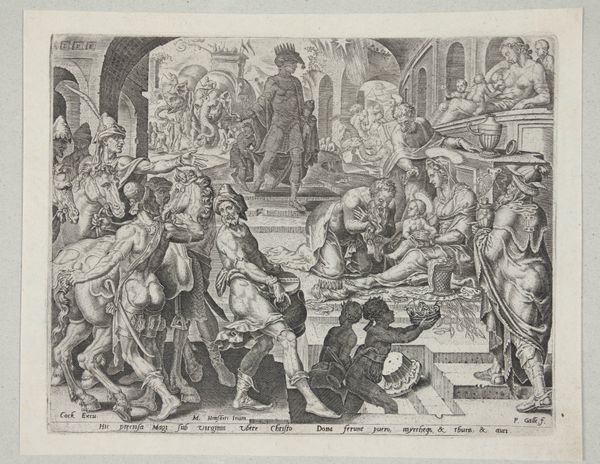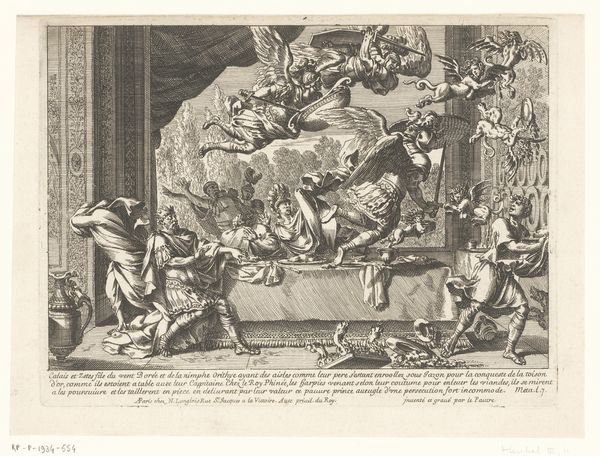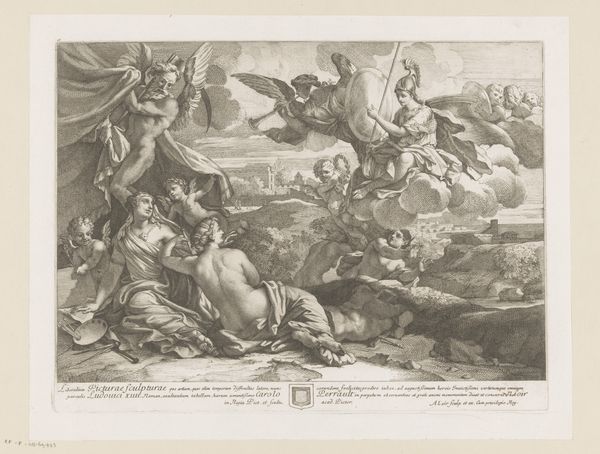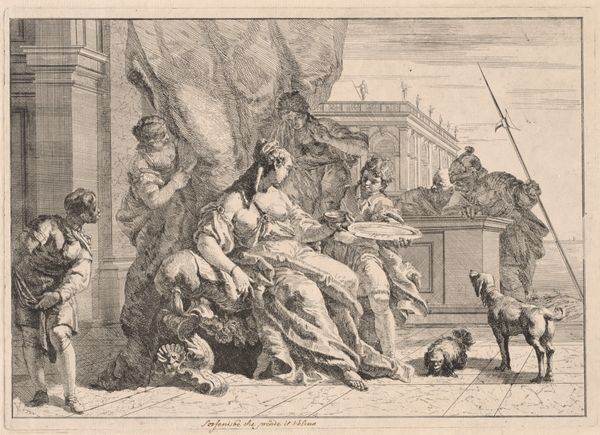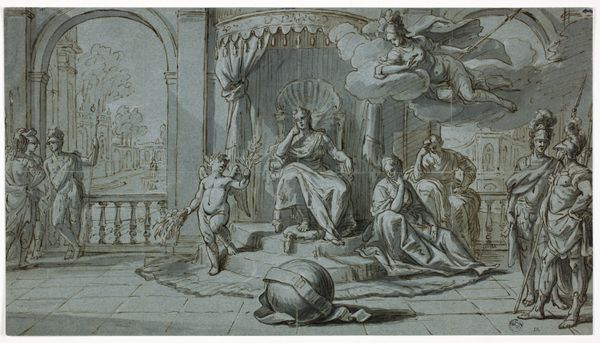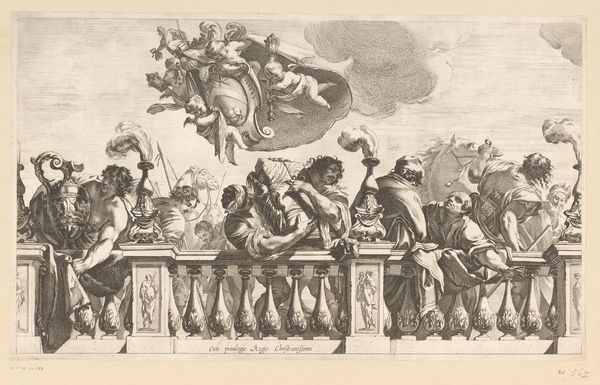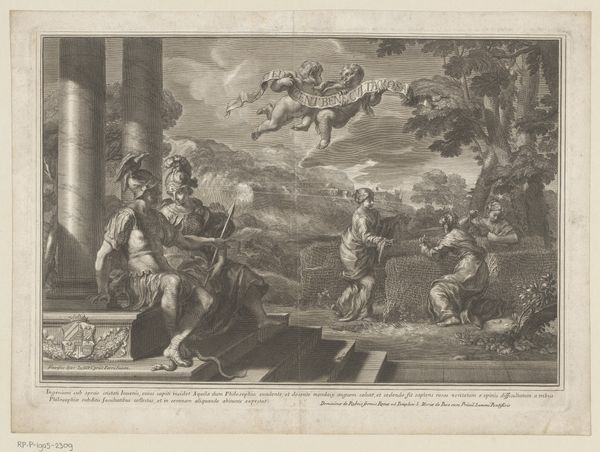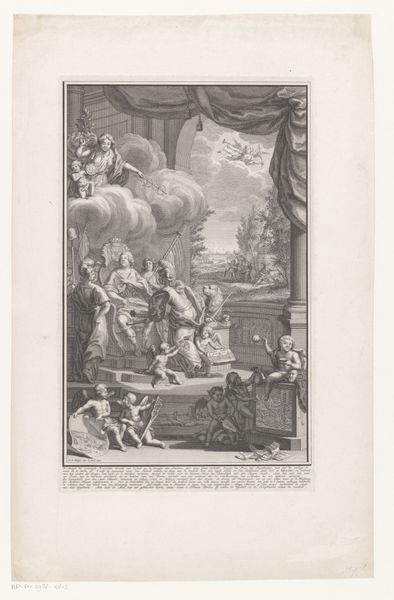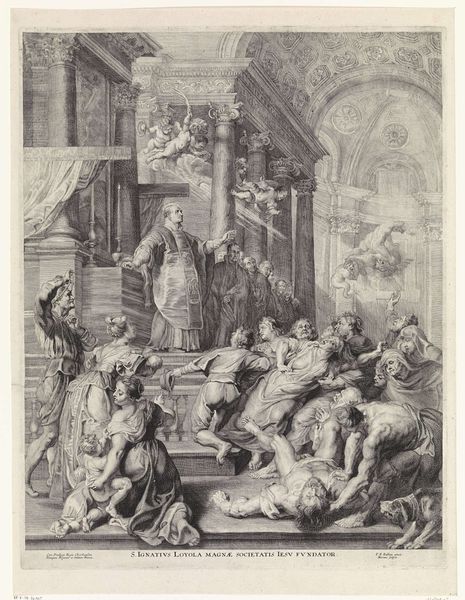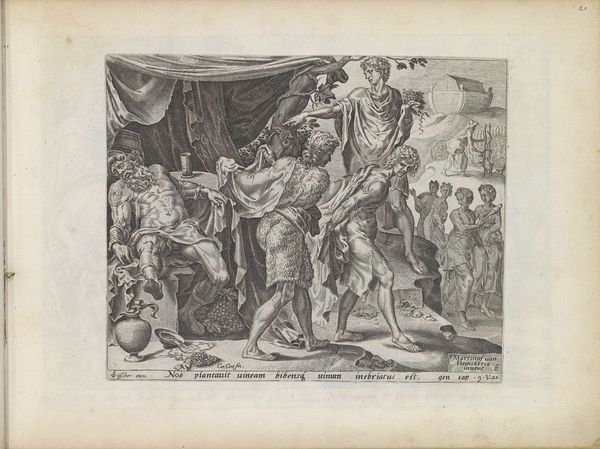
print, engraving
#
allegory
#
baroque
# print
#
figuration
#
history-painting
#
engraving
Dimensions: plate: 28.7 × 38.7 cm (11 5/16 × 15 1/4 in.) sheet: 41.3 × 59.2 cm (16 1/4 × 23 5/16 in.)
Copyright: National Gallery of Art: CC0 1.0
Editor: This is Francesco Fontebasso's "The Sacrifice of Iphigenia," an engraving from 1744. There’s a lot going on, and it feels quite theatrical, almost operatic. What strikes you when you look at this piece? Curator: It’s potent with culturally embedded imagery. Note the contrast between the grounded turmoil – Agamemnon’s anguish – and the airy arrival of Diana with Iphigenia ascending, it suggests a divinely ordained shift. The deer substitutes the maiden. Do you perceive a visual parallel with Christian iconography, perhaps an Annunciation in reverse? Editor: That's a really interesting point! I hadn't considered the Annunciation, but now I see the divine intervention element. The deer certainly looks like a stand-in. Is Fontebasso using these pre-Christian myths to speak to broader spiritual ideas of his time? Curator: Precisely! It revives an ancient narrative and layers onto it a psychological landscape, reflecting humanity’s continuous search for meaning through sacrifice and redemption. Does the figure prostrate on the ground evoke other, perhaps more familiar, historical depictions? Editor: It definitely echoes common poses of grief or supplication seen in religious paintings. This engraving seems to pack multiple layers of meaning into one scene! Curator: Indeed, by juxtaposing classical myth with accessible emotional cues, the artwork provides a space for historical connection, engaging viewers with cultural narratives far beyond a single moment. We can see the intersection between shared suffering and divinely ordained salvation as both tragic and comforting. Editor: This has given me so much to think about - it is fascinating how the weight of those enduring symbols changes over time.
Comments
No comments
Be the first to comment and join the conversation on the ultimate creative platform.
